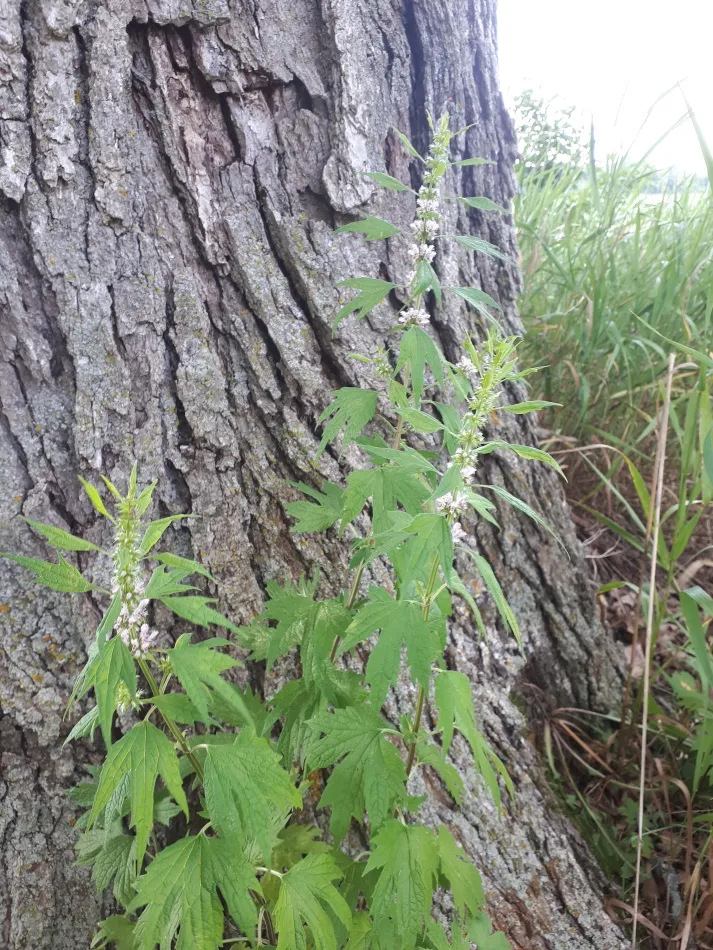}
I hope to post a number of articles on natural herbal medicine and the practice of wildcrafting. I figured the best way to start is to explain wildcrafting in the first place.
What is Wildcrafting?
Wildcrafting is simply the art of finding and harvesting plants from the wild. It's usually called “foraging” when you do it for food, which I will also write about soon enough. But for medicinal herbs, its more common to say “wildcrafted”. You don't necessarily have to be out in the wild either. Technically, gathering up some leaves from dandelion plants in your own backyard would count too. 
Motherwort - my favorite wild herb
Why Harvest this Way?
There are many reasons why you might want to consider taking up this hobby. I love how relaxing it is to go walking and collecting, while getting to know the plants and wildlife of the various places I frequent. In terms of medicinal herbs, I strongly believe that wildcrafted herbs are far more potent than “tame” cultivated varieties. Plants that have had to struggle to survive, and that have the right natural traits to thrive.
And to be brutally honest, it's just easier to go find wild plants that require no work or effort on your part. Let nature do its thing without you. No planting, tilling, weeding or watering necessary. No cost either!
Wildcrafting Tips
The most important thing to remember with successful wildcrafting is to do your harvesting away from potential sources of toxins. Basically, just stay away from the road. It's always so tempting when I see huge stands of mullein growing along the road, to grab a basket and start snipping leaves. But these plants will absorb all the exhaust and other pollutants that come from traffic and the road itself. Best to leave them be. Same thing would apply for any open fields that you don't know. Besides the fact that you would be trespassing, the plants may have been sprayed with any number of chemicals. Trust your locations!
To really honor the spirit of wildcraft, do your collecting with respect and consideration for the plants. Don't strip-mine a patch of wild strawberry or raze a field of nettle. Take just a few leaves or flowers from each plant, and move on. In particular, leave plenty of flowers in the spring so that the local bee populations have a source of food. I also feel that this also means that roots are off limits. I don't like the idea of pulling up plants and killing them. So I stick to the aerial parts (leave, flowers, stems, seeds) that can be taken with no harm.
I personally try not to wear any sunscreen or insect repellent when I wildcraft, so keep my harvest as clean as possible. In my case, I sell my herbs and take an extra step to keep everything as free from chemicals as I can. When collecting for your own use, you can do whatever feels right for you.
Tool for herbal wildcrafting are minimal. I have a big wicker basket for most collecting, a canvas bag for smaller items, a head net for the buggy season, sharp scissors for clipping and gloves (usually just for nettle season). Definitely not much investment necessary to get started.
My last comment on wildcrafting is to get to know the plants. Pretty much anyone can identify dandelion or wild strawberry, but do you know motherwort from nettle, or how to find St. John's Wort? Never make tea until you are 100% confident in your knowledge. A good field guide is a must. I hope to post some articles on how to identify plants in the wild soon too.
This is my very first Hive.blog post, so I do apologize if the formatting is a little weird. I am getting used to the editor :)
